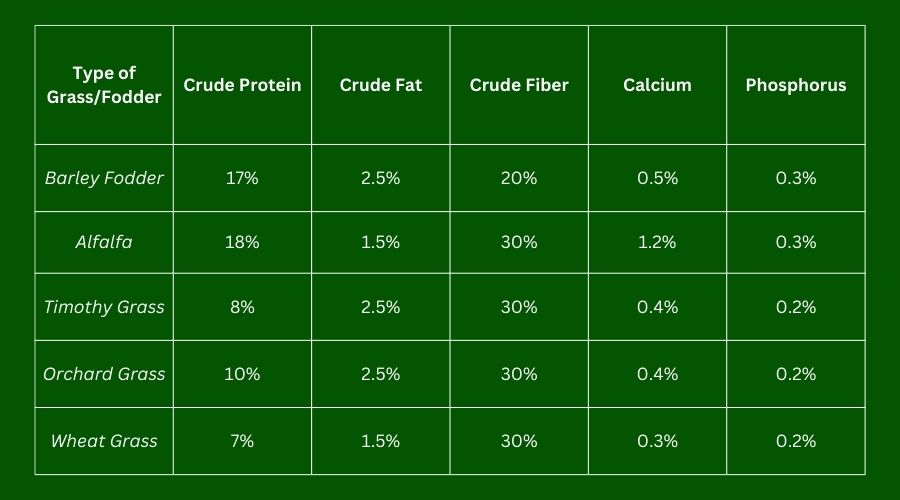Hydroponically grown barley fodder is a nutritious and cost-effective forage option for livestock. It is rich in protein, easy to store, and easy to grow. Sprouted hydroponic barley is considerably easier to digest than dry grasses and legume hays, which means more vitamins, minerals, and proteins are available for the animals. According to the research from UCANR, Hydroponically grown barley fodder also has a higher digestible dry matter concentration and lower acid detergent fiber concentration than oat, triticale, and wheat. Hydroponic systems do not require soil or pesticides, making them an all-natural alternative to traditional farming methods.
Hay, on the other hand, a staple in livestock diets, comes in various types, each offering a unique nutritional profile tailored to the needs of different animals. The protein levels, fiber content, and other nutritional components vary significantly depending on the kind of hay and its maturity at harvest.
Grass Hay vs. Alfalfa hay that is in the Legume family
According to research, the protein content in grass hay can range between 8% and 14% and 3% for straw. In contrast, legume hays, such as alfalfa, typically contain higher protein levels, ranging from 15% to 20%. The protein levels of hay are influenced by the type of hay and its harvest time. Hay cut earlier in its growth stage will generally have higher protein levels.
Alfalfa hay is a high-protein forage, often boasting levels between 12% to 20%. Even late-cut alfalfa typically contains 12 to 15 percent crude protein. The fiber content of alfalfa hays ranges from 20 to 28 percent. In contrast, grass hay averages 8.4 percent crude protein and 31.4 percent fiber.
Bermuda Hay
Bermuda hay is a popular grass hay variety cultivated predominantly in the southern United States. Unlike alfalfa, Bermuda hay belongs to the grass hay category. This distinction gives Bermuda hay its characteristic lower protein and higher fiber levels. Such a nutritional profile makes it an ideal feed for less active animals or those prone to obesity.
The chemical composition of fresh Bermuda grass reveals protein levels between 9-16%, neutral detergent fiber (NDF) ranging from 45-85%, and acid detergent fiber (ADF) spanning 20-45%2. However, when transformed into hay, the quality tends to drop slightly, with protein levels averaging 10%, NDF 75%, and ADF 36% on a dry matter (DM) basis.
Timothy Hay
Timothy hay is another grass hay variety favored for feeding livestock, including horses, rabbits, and guinea pigs. As reported by Barr-Ag Hay, timothy hay's nutritional breakdown includes crude protein levels from 7 to 11% and calcium content between 0.38% and 0.51%. Furthermore, its digestible energy ranges from 0.82 to 0.94 megacalories (Mcal) per pound.
Wheat Straw vs. Hay
Notably, wheat straw, while used in some livestock diets, contains a mere 3% crude protein, which is considerably lower than most hay types. This distinction emphasizes the inherent value of hay as livestock fodder. Made from dried grass or legumes, hay's nutritional worth is closely tied to its leaf content. Grass hay leaves offer superior nutrient levels and digestibility when the plant is young and growing. Conversely, as the plant reaches full maturity, the fiber content in these leaves increases.
Understanding the unique nutritional attributes of each hay type is crucial for catering to the specific dietary needs of livestock. By selecting the appropriate hay based on its composition, farmers can ensure optimal health and productivity for their animals.

Table references:

